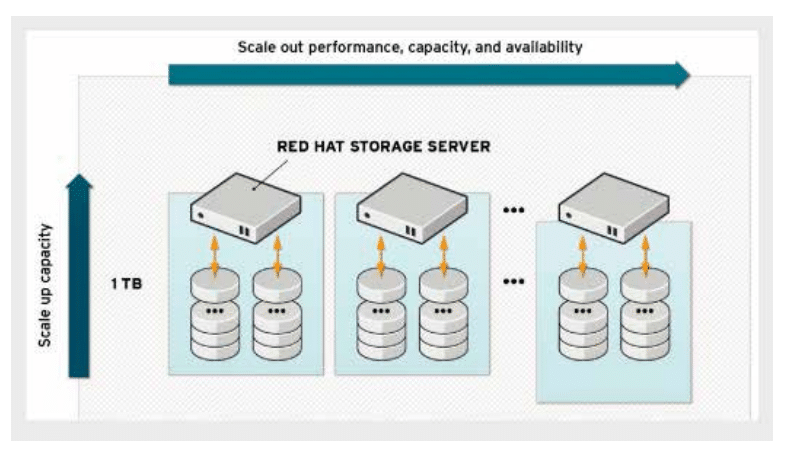
Today Red Hat Inc. announced the general availability of the latest version of its software-defined storage solution, Gluster 3.2. The 3.2 version comes with several new enhancements and features aimed at lower costs while improving small file performance and increasing data integrity. Gluster 3.2 will also have tighter integration with Red Hat OpenShift Container Platform.

As we previously said, Gluster built its business around GlusterFS, a distributed high-availability software-only file system that allows resources from various computing and storage devices to be pooled into a single, centrally-managed namespace. A Gluster storage pool presents itself to client as a standard POSIX device and supports NFS, CIFS, HTTP, FTP as well as the Gluster protocol. A unique feature of the software is that it doesn't require a metadata server to coordinate I/O. Rather, GlusterFS uses an elastic hash algorithm that allows any node in the pool to locate data anywhere in the cluster.
While Gluster has several benefits, the latest update addresses the issue that NAS storage has with scaling metadata intensive operations, particularly with small files (under a few megabytes). The biggest benefit of this would be for Red Hat OpenShift Container Platform registries’ storage. According to Red Hat, Container registries, the heart of any container platform, are critical to resident applications and need highly elastic, durable storage. In addition, faster metadata-intensive operations can improve day-to-day operations by as much as 8x, increasing the responsiveness of the storage system at scale and improving the overall end-user experience.
New capabilities and features include:
- Deeper integration with Red Hat OpenShift Container Platform, adding native support for advanced storage services such as geo-replication and in-flight encryption for applications deployed in containers. These enhancements, packaged into the refreshed docker container image that is shipped with the latest release of the product, can also enable three times as many persistent volumes (PVs) per cluster.
- Lower infrastructure costs through arbiter volumes, which shrink the overall hardware footprint while maintaining the same level of data integrity. Arbiter volumes resolve conflicts in the unlikely event of data mismatch between two nodes without requiring a third copy of the data. Customers running traditional network attached storage (NAS) use cases such as back/restore can achieve the data integrity offered by three-way replication without incurring the associated cost of hardware, data center space, and power. This can be particularly advantageous to customers running hyperconverged configurations in remote-office/branch-office (ROBO) scenarios.
- Faster self-healing of erasure coded volumes can minimize performance impact during repair and healing operations. In addition, enhancements to self-healing operations can benefit customers who have deployed Red Hat Gluster Storage with Red Hat Virtualization to store virtual machine images.
- Enhanced monitoring capabilities enabled through native, asynchronous notifications help to improve day-to-day storage management. In addition, Red Hat Gluster Storage offers extensibility through the Nagios open source monitoring framework for enhanced storage operations management.
Sign up for the StorageReview newsletter
